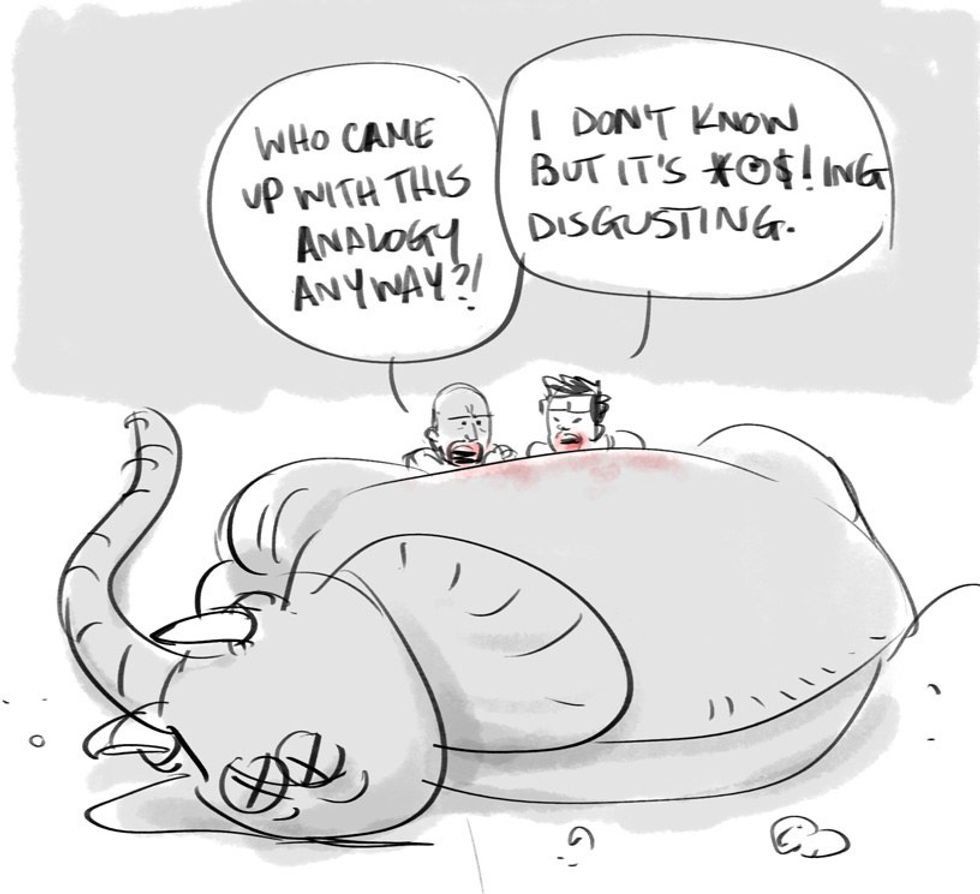When people think of “the next big thing,” in business their mind normally gravitates towards the human computers of the cyber industry, engineers making new gadgets or techies making an app for every aspect of life. Nonetheless, within the past 5 years there has been a sector catching the eye of economic analysts, investors and trend reporters: agriculture. A vast amount of the public still perceives agriculture as a happy farmer nonchalantly riding his tractor or milking a cow. Contrary to popular belief, this sector has embraced and applied modern technology over the past few decades, making it a hotbed of innovation, improved efficiency and managerial strategies. Farming has remained an economically stable field but investors have put money elsewhere because the sector has always been dependent on individual families and government subsidies. However, modern technology and a transition to corporate structure have made the agricultural sector the objective for today’s leading financial stakeholders.
Within the sector, farming and agribusiness have been particularly active. Industries within this field include chemical, insecticides, fertilizer, veterinarian science, technology, research and seed companies. Companies such as John Deere, Bayer, Monsanto, DuPont and Dow are major players within the agribusiness industry. Historically, most economic action has taken place amongst the companies within the agribusiness industry. Large agribusinesses have been on the move, acquiring smaller entities or merging with other huge corporations. For example, last December DOW announced their plan to acquire DuPont. This combined market capitalization of about $130 billion at transaction makes them the agriculture market leader and second largest revenue generator in material science. In addition, Bayer struck a deal with Monsanto that offered a $66 billion dollar acquisition plan (Bartz and Roumeliotis). Traditionally, a small handful of heavy-hitters have enjoyed domination and appear to continue this tendency throughout industry and even into the sector.
On the other hand, farming remains far less consolidated than their neighbors in agribusiness. Family-run businesses still lead U.S. agricultural production. In America, family farms make up 97.6 percent of all U.S. farms and are responsible for 85 percent of U.S. farm production (USDA).The USDA Department of Economic Research Service defines a family farm as a “principal operator and people related to the principal operator by blood or marriage that owns most of the farm business,” (MacDonald). While this definition focuses on ownership and control of the family farm business, it does not take farm size production by the farm family into account. Over the past decade the family farm has grown larger, more efficient and produces higher yields. Interestingly, these recent strides within the farming industry can be credited to some of the same underlying strategies used by companies within agribusiness. The following section breaks down the trends occurring within this sector that are grasping the interests of economists, investors, policy makers and more.
Changes to due generational differences
Today, members from generation X and Y are taking over their family farms. Often, these individuals are more educated and technologically advanced than their predecessors. They have been trained to understand that agriculture today includes differentiated products, target marketing, strategic distribution systems. More farmers are in a role of a producer who delivers raw material and ingredients for manufacturers and food processors. There is increased competition and current consumer taste magnifies the importance of quality. As a result, successful farms and agribusinesses will need to be better, faster, and cheaper to have a sustainable competitive advantage (Boehlje and Gray). To achieve these goals of modern agriculture, farmers have become more open to renting and leasing land and equipment instead of attaining full ownership. The current generation welcomes the outside investments, and is starting to grow into other productions such as distribution, marketing, management and packaging.
Vertical Integration
Conventionally, agricultural investments have been chiefly land centered. Most investment propositions care more about owning real estate and not the operations of the farm. Recently, capitals and fund owners have begun to search for and invest in vertically-integrated agricultural entities. Vertical integration is an approach where an enterprise expands its business operations into different stops along their normal production path. This has been especially popular in the livestock industry. A food processor or agribusiness signs a contract with a farmer that slows the farmer to raise livestock that are owned by integrators and agree on a price to value the livestock. In many cases, the farmer sets the conditions and methods for raising the livestock. The farmer is paid by the integrator based on how efficiently they use feed, equipment and other resources provided by the integrator. This set up normally protects the integrator from liability and reduces the risk that they would take if they were to take the farming into their own hands. The USDA encourages vertical integration because it has amplified food output. “Contractors typically undertake a large share of production and price risk while earning the bulk of net income from the commodity's production (USDAERS). Farmers benefit by having more of an opportunity to expand their operations more quickly with less debt and risk. In short, the restructuring of the agriculture sector into a vertical form is attracting new investors because it offers a market that is capitalizing on efficiency, cutting production costs, reducing risk and is not solely tied to the value of land.
Escalating popularity of farmland funds
Investors realize that today’s market is global and never stops pivoting at a rapid pace. They stay on top of new social, demographic, economic and technological trends so that they can retain or grow their portfolios. They aim to say ahead of the curve by diversifying their investments and moving their money to and from sectors that are robust. The agriculture sector has been a recent objective of investors. Highly organized and healthy farmland presents an investment opportunity that is valuable and durable. Farmland has usually been a steady asset in the U.S. and has historically outperformed other alternatives. It is a fixed asset and is necessary to the world’s well-being. Furthermore, it is forecasted to become even more important because the demand of food is increasing and the supply of farmable land is decreasing. Over the past decade, more investment companies and the world’s wealthiest people have begun to add farmland to their portfolios. U.S. agricultural land values have climbed 4.6% annually since 1990 on average with a return of 11.8% (USDAERS). Groups such as Goldman Sachs Group Inc. and J.P. Morgan Chase & Co. added their first farmland investment fund last year of $173 million. TIAA-CREF, a prominent retirement fund manager for employees of universities and nonprofits, started participating in farmland investments in 2007 and now manages more than $5 billion in farmland assets. (Kesmodel and Newman). Individuals are also jumping on board with the agricultural sector. For example, Bill Gates owns 8.4% of John Deere and Co. while also owning over 100,000 acres of farmland across the United States (Das and Karmin). Currently, the sector sells itself as a sturdy place to house investments and feel benevolent while doing it. Putting large sums of personal money towards the sector that feeds the world and supports the American farmer appears virtuous to the public.
A number of new forces within the agriculture sector are creating the ideal environment for investors. The world’s eldest industry is proving that it will have a place in the modern economy. Despite the humble, antique stigma agriculture sometime receives, recent activity among economic leaders and stakeholders suggests that this sector is capitalizing on the advancements the modern age has to offer. The food market is one of the most simple supply and demand equations to economists, policy makers and business people. A growing population equals an increased demand for food. A decreasing size of demand equals an increased value on farmland. There are also several sub factors that contribute to the growing value within agriculture. Consumer preference for food transparency and farm to table service is a growing trend throughout the globe. More food processing companies who want to build vertical relations with farmers are on the rise. Additionally, companies vertically acquiring other agribusinesses will feel the need to follow suit in order to remain competitive amongst their opponents. Finally, the agribusiness industry has capitalized on modern technology that has reduced the risk for failed harvests and allows farmers to produce higher yields in a shorter amount of time. Through an investors eyes the ideal sector is one that is on an upswing, innovating and providing new doors for to market entry. At this point in time, agriculture provides these traits plus the consistent value food and land have held overtime. Thus, the stage is set for agriculture to become a hot commodity for stakeholders in the U.S. and around the world.




 Photo by
Photo by  Photo by
Photo by 
 Photo by
Photo by 





















